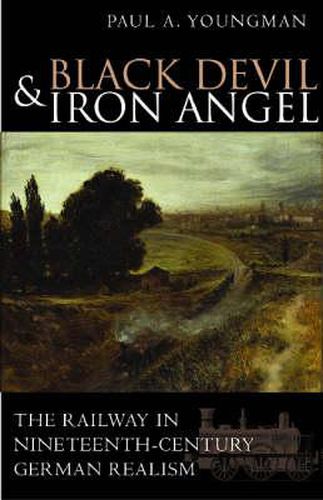Readings Newsletter
Become a Readings Member to make your shopping experience even easier.
Sign in or sign up for free!
You’re not far away from qualifying for FREE standard shipping within Australia
You’ve qualified for FREE standard shipping within Australia
The cart is loading…






Black Devil and Iron Angel examines how the railway was received and represented by a variety of nineteenth-century German and Austrian realist authors including Berthold Auerbach, Theodor Fontane, and Gerhart Hauptmann. This book is a compelling, focused analysis of the point at which mythology and technology merge, signifying the composition of a larger narrative desired by human beings to gain some sense of control over a world in which they have little power - a problem not by any means confined to German-speaking lands. Using Theodor Adorno and Max Horkheimer’s seminal work on the dialectical nature of the Enlightenment as a framework, Youngman makes the original claim that realist authors are a particularly rich source in which to study the intersection of technology and mythology. Authors of nineteenth-century literature often introduced scientific ideas and technological developments in order to bolster the claim that what they write is real and therefore represents truth. In doing so, however, they often fail to divorce these developments from myth. They either couch the train and its associated technologies, for example, in mythological terms, or show how these technologies begin to create their own myths. In his emphasis on the legitimacy of both scientific and non-scientific approaches to understanding, Youngman follows the lead of Charles Percy Snow, who, in the mid-twentieth century, identified what he considered a dangerous rift between literary intellectuals on the one hand and scientists on the other. In order to prevent the establishment of two distinct cultures incapable of communicating with one another, he admonished intellectuals to establish a third culture, a culture bridging the gap between the techno-scientific realm and the mytho-literary realm. Youngman’s work is intended as a contribution to what has become known as Third-Culture Studies.
$9.00 standard shipping within Australia
FREE standard shipping within Australia for orders over $100.00
Express & International shipping calculated at checkout
Stock availability can be subject to change without notice. We recommend calling the shop or contacting our online team to check availability of low stock items. Please see our Shopping Online page for more details.
Black Devil and Iron Angel examines how the railway was received and represented by a variety of nineteenth-century German and Austrian realist authors including Berthold Auerbach, Theodor Fontane, and Gerhart Hauptmann. This book is a compelling, focused analysis of the point at which mythology and technology merge, signifying the composition of a larger narrative desired by human beings to gain some sense of control over a world in which they have little power - a problem not by any means confined to German-speaking lands. Using Theodor Adorno and Max Horkheimer’s seminal work on the dialectical nature of the Enlightenment as a framework, Youngman makes the original claim that realist authors are a particularly rich source in which to study the intersection of technology and mythology. Authors of nineteenth-century literature often introduced scientific ideas and technological developments in order to bolster the claim that what they write is real and therefore represents truth. In doing so, however, they often fail to divorce these developments from myth. They either couch the train and its associated technologies, for example, in mythological terms, or show how these technologies begin to create their own myths. In his emphasis on the legitimacy of both scientific and non-scientific approaches to understanding, Youngman follows the lead of Charles Percy Snow, who, in the mid-twentieth century, identified what he considered a dangerous rift between literary intellectuals on the one hand and scientists on the other. In order to prevent the establishment of two distinct cultures incapable of communicating with one another, he admonished intellectuals to establish a third culture, a culture bridging the gap between the techno-scientific realm and the mytho-literary realm. Youngman’s work is intended as a contribution to what has become known as Third-Culture Studies.